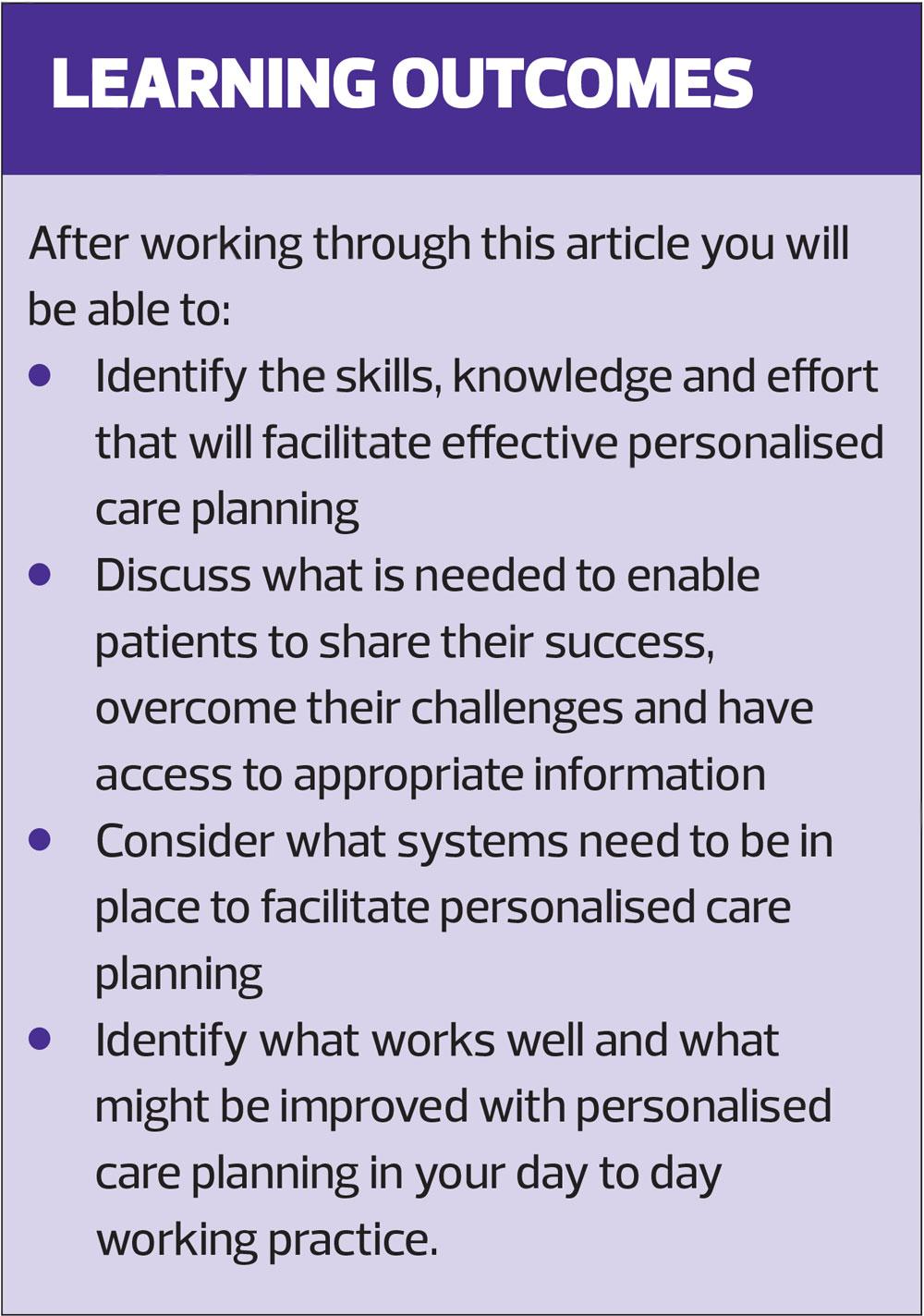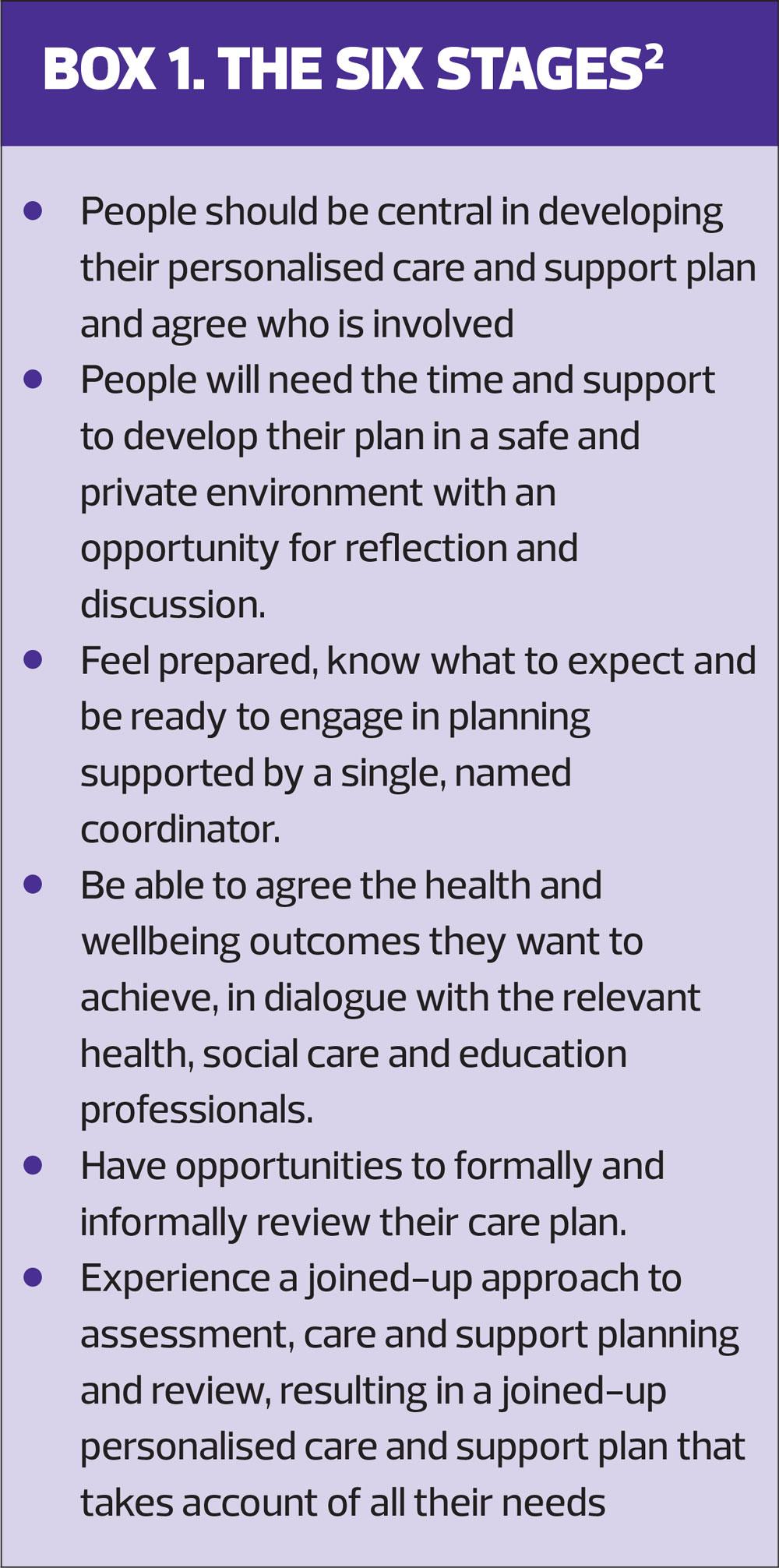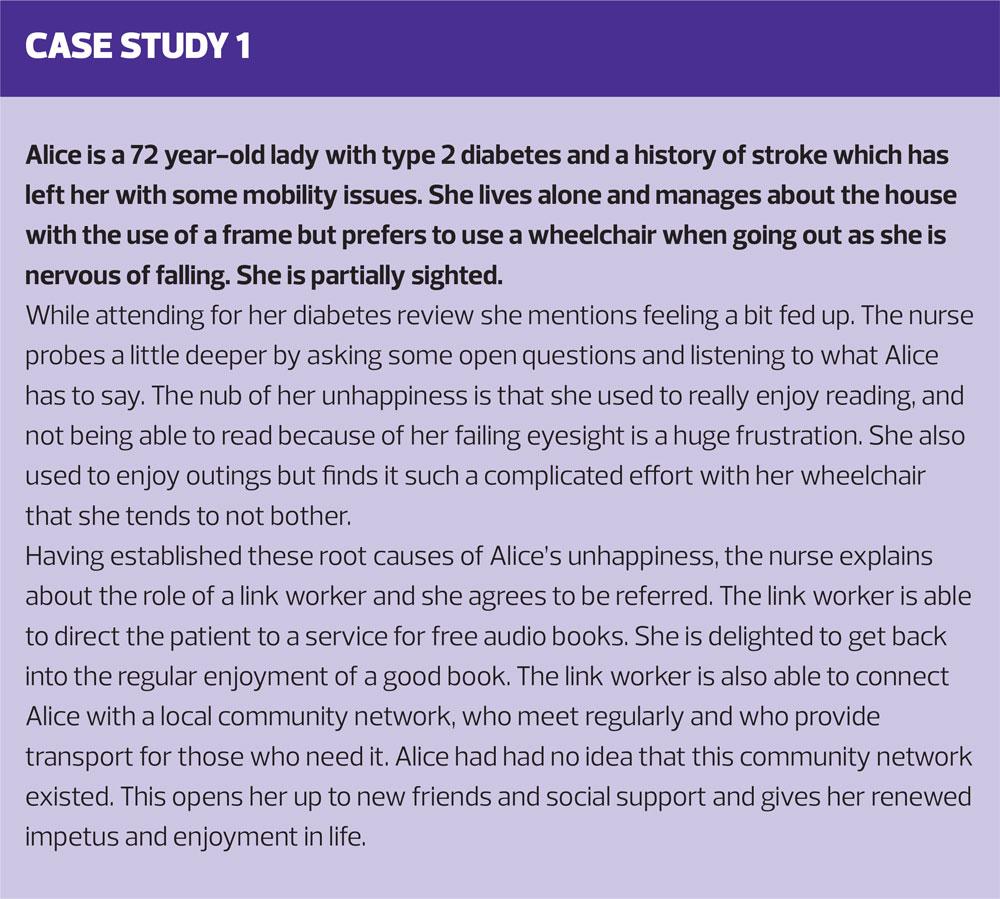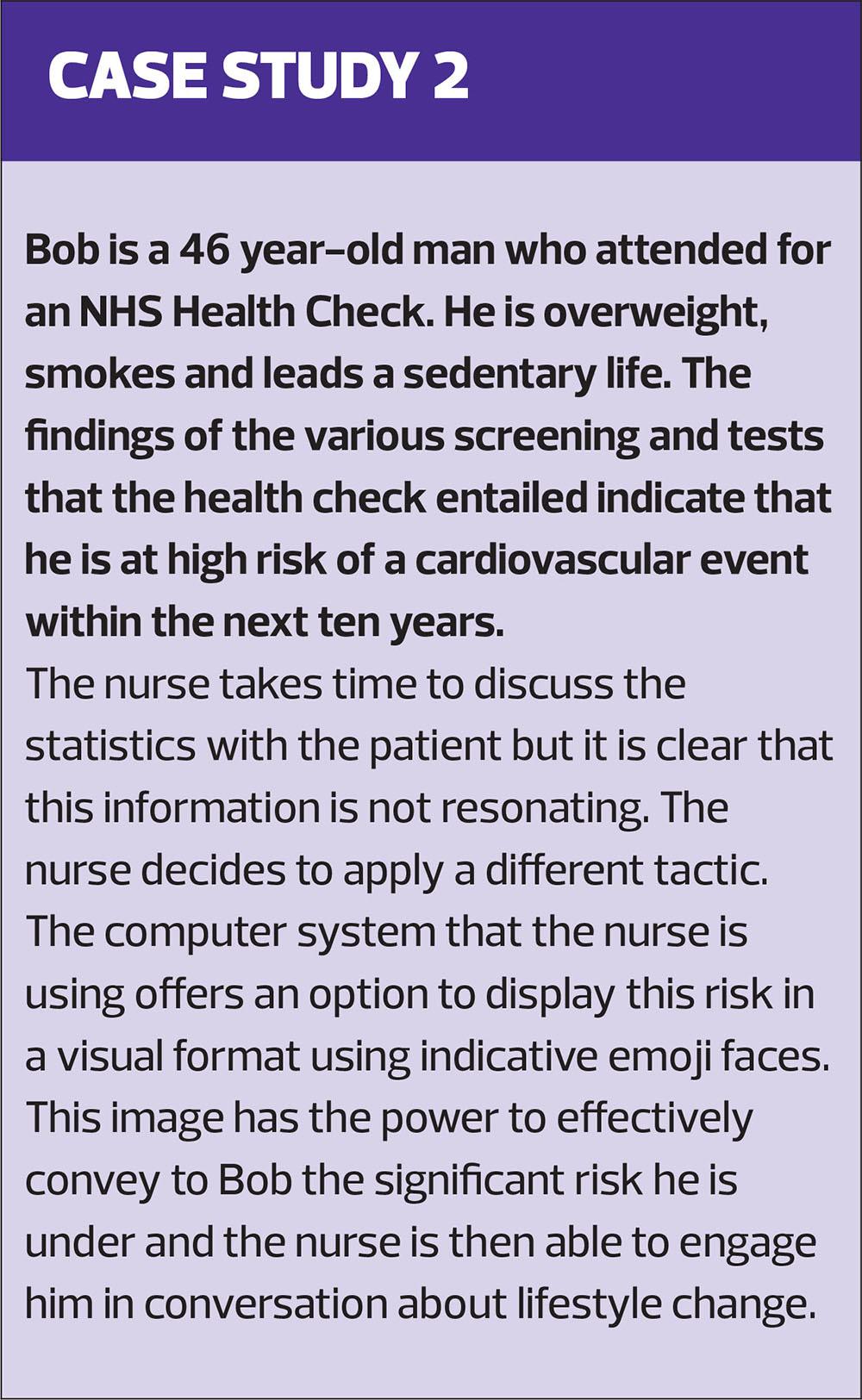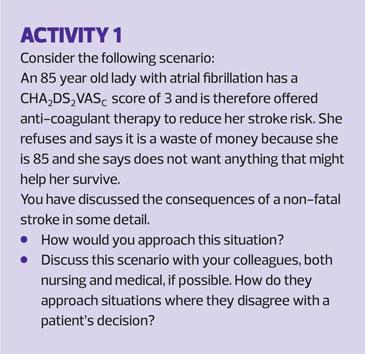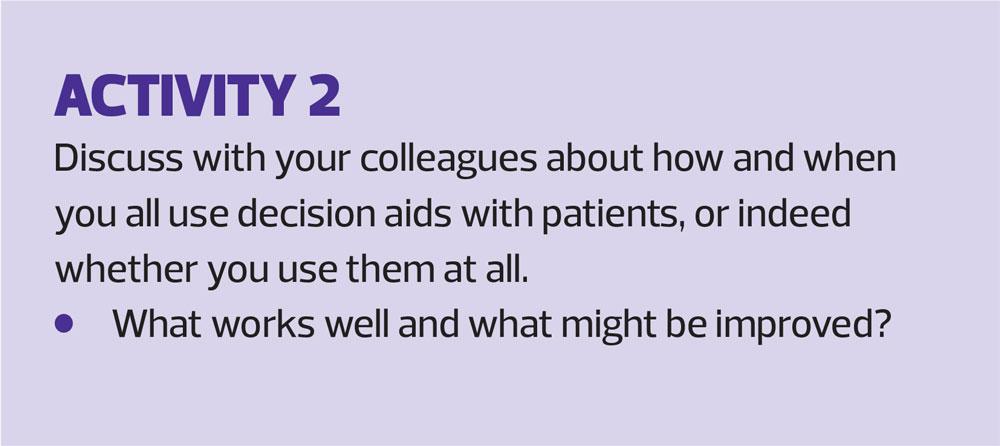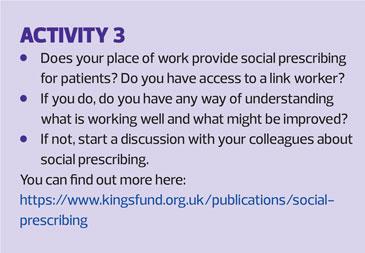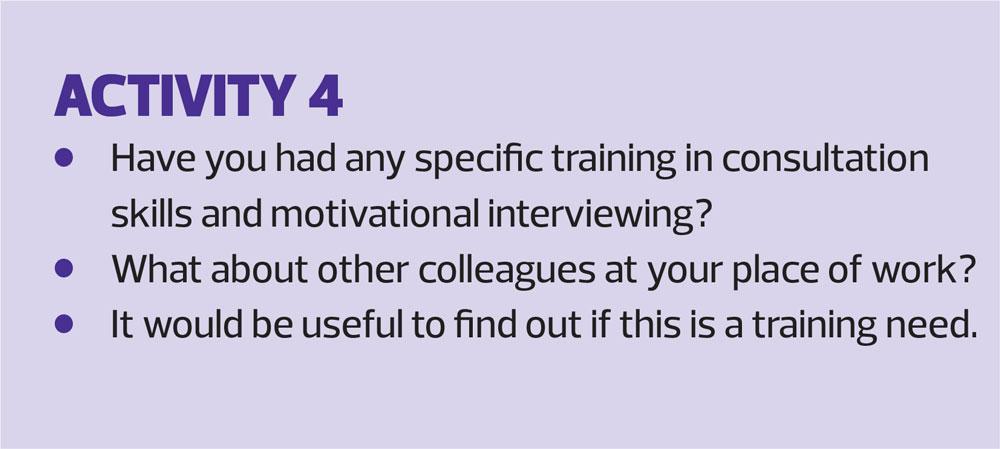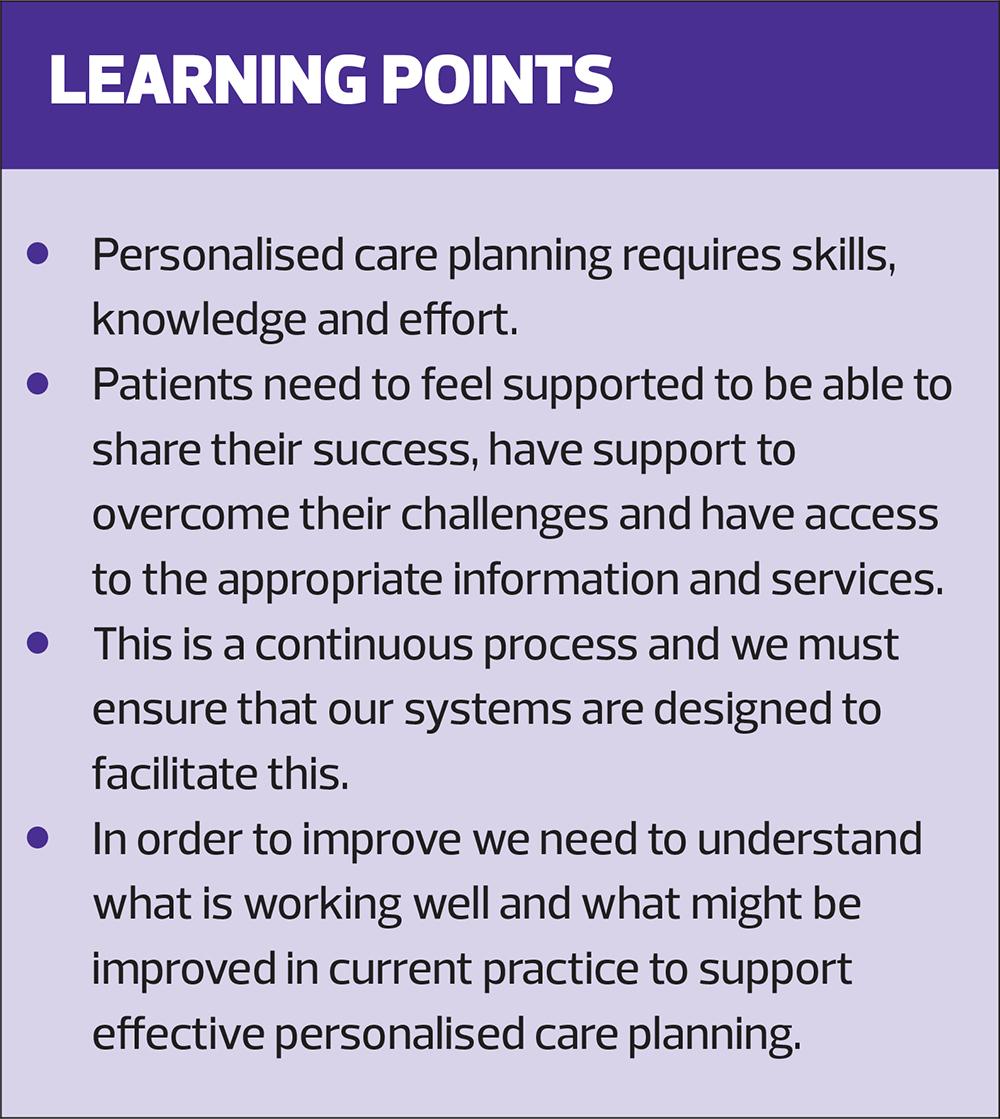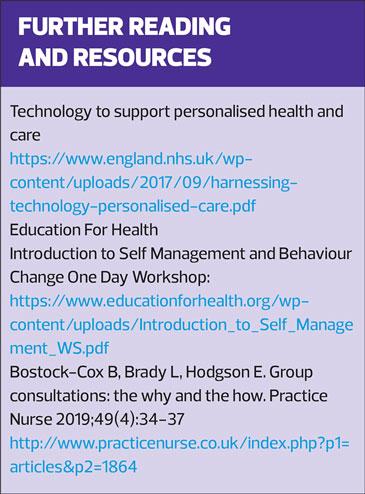Making personalised care happen: implementing the ‘Comprehensive Model’ in general practice
Rhian Last
Rhian Last
RGN MAMS
PGC Leadership, PGC Quality Improvement, PGC Primary Care Education
Head of Academy, Education For Health
Board Member RCGP Yorkshire Faculty
Board Member, Self Care Forum
Personalised care planning is a term we have all heard, but what does it actually mean and how can we make sure that everyone is given the opportunity to be fully involved and engaged in decisions about their health and social care? In this article, we look at what it will take to put it into practice
Personalised care planning is a term that everyone working in health and care will be familiar with. We have all heard phrases such as:
- ‘Putting the patient at the heart of everything we do’,
- ‘No decision about me without me’, and
- ‘Making every contact count’.
However, we need to address the widespread variation in standards of approach and effectiveness of care planning, and ensure that everyone is afforded the opportunity to be included and involved in decisions about their health and social care.
The NHS Long-Term Plan,1 commits to improving personalised care planning through the implementation of the NHS Comprehensive Model of Personalised Care.2 Universal Personalised Care – Implementing the Comprehensive Model 3 is the associated strategic delivery plan. It brings together six evidence-based and inter-linked components, which are, in essence, the principles that support effective personalised care in practice. This article will explore these six principles in the context of the general practice setting.
1. SHARED DECISION MAKING
Directive: ‘People are supported to a) understand the care, treatment and support options available and the risks, benefits and consequences of those options, and b) make a decision about a preferred course of action, based on evidence-based, good quality information and their personal preferences.’
Shared decision-making can be viewed by some healthcare professionals as unnecessary, difficult to instigate due to time pressures, and, indeed, some professionals believe that this is something already undertaken during a consultation.4 Effective shared decision making, however, is important. It gives patients the opportunity and support to make decisions about their care and treatment in partnership with health professionals. Research by the King’s Fund has demonstrated that this can lead to greater patient satisfaction with their care, and shown that people are also more likely to choose treatments based on their own values and preferences, rather than those of the health care professional, with an associated improvement in treatment adherence.5
In general practice patient consultations have become systemised, thereby influencing the expectations of what will happen. This will be due to a number of factors, including IT systems and inflexible templates, time pressures and the historic supposition that the clinician always knows best.
Good communication skills are essential in order to conduct a meaningful and effective consultation and are key to facilitating a decision that is informed and agreed. Open questions invite people to expand their conversation and to tell their story. This clears the way for a meaningful, holistic overview of what is happening in their life.6 We can really get to understand things from a patient’s points of view. Active listening with demonstration of empathic body language can facilitate a deeper more meaningful conversation in order to ascertain what really matters to the patient. It’s so important not to be side tracked, for example by a computer template, or interrupted by a telephone call.
Patients will need to know their options, including their legal rights, and the likely outcomes. It is imperative that health care professionals maintain equipoise, that is to say an even-handed stance. (See Reflective Activity 1)
2. PERSONALISED CARE AND SUPPORT PLANNING
Directive: ‘People have proactive, personalised conversations which focus on what matters to them, delivered through a six-stage process and paying attention to their clinical needs as well as their wider health and wellbeing.’
Personalised care planning has been shown to demonstrate better health outcomes, together with an enhancement in people’s aptitude to self-manage. This has been further improved where personalised care planning has been embedded into routine care delivery.7 Improvement drives, in this case to support personalised care planning, should become embedded into normal working patterns so that they become sustainable ways of working.8
The six stage process (Box 1) offers a logical progression and flow for a consultation, but this poses huge challenges for general practice surgeries where appointment slots are very often set at ten minute intervals and there is a current workforce crisis which is impacting on capacity and demand. We will be exploring solutions later in the article.
3. ENABLING CHOICE, INCLUDING LEGAL RIGHTS TO CHOICE
Directive: ‘Enables choice of provider and services that better meet people’s needs, including legal rights to choice in respect of first outpatient appointments, and suitable alternative provider if people are not able to access certain services within the national waiting time standards.’
People need information in order to make informed decisions about treatment options that can help them achieve their personal goals for managing their health. The healthcare professional will need to take into account the level of involvement that the individual wants and present them with appropriate information about their condition (e.g. the presence of risk factors or other diseases) and the treatments available, together with the probable outcomes of the different options. The individual can then reflect on the options presented, relating them to the values they place on benefit and harm.9
When providing information it is important to consider health literacy. This can be best described as people having the language, literacy and numeracy skills, and the knowledge, understanding and confidence to access, understand and utilise health and social care information and services. Levels of health literacy can be influenced through the provision of clear and easily available information.10 Between 43% and 61% of English working-age adults commonly do not understand health information.11 People from disadvantaged and challenged socioeconomic groups have been found to have low or inadequate levels of health literacy.12 People with low health literacy are less likely to access information and consequently will lack the health knowledge that they need.13 Conversely, satisfactory health literacy will help people to capably manage their long term conditions, engage with prevention programmes, make informed lifestyle choices and keep to treatment regimes.
Because of time constraints during consultations, and to give time for patients to think through their own opinions, decision aids are increasingly being used. Patient decision aids are particularly designed to assist patient choice about their healthcare. Decision aids often present the various options visually, to help patients weigh them up. Many of the computer systems in general practice surgeries provide access to decision aids. Another forthcoming example is the NHS Shared Decision App.
4. SOCIAL PRESCRIBING AND COMMUNITY-BASED SUPPORT
Directive: ‘Enables all local agencies to refer people to a ‘link worker’ to connect them into community-based support, building on what matters to the person as identified through shared decision making/ personalised care and support planning, and making the most of community and informal support.’
Social prescribing is a way for GPs, practice nurses and other primary care professionals to refer people to a range of local, non-clinical services, often via link workers who can give people time, focusing on what matters to the person and taking a holistic approach to people’s health and wellbeing. They can navigate people to community groups and statutory services for practical and emotional support. This might include a range of sports and exercise, arts and crafts activities, group learning, gardening and cookery. A key element is the social aspect and getting people in touch with their community. Loneliness can be underestimated, ignored, trivialised and stigmatised. The emerging negative and detrimental effects of loneliness indicate that this is becoming a public health problem.14
Social prescribing can be effective for a wide range of people, including those living with long term conditions, those who need support with their mental health, people who are lonely or feel isolated and people challenged by complex social needs. When social prescribing works well, people can be easily referred to link workers from a wide range of local agencies, including general practice. Self-referral is also being encouraged.
5. SUPPORTED SELF-MANAGEMENT
Directive: ‘Increasing the knowledge, skills and confidence (patient activation) a person has in managing their own health and care through systematically putting in place interventions such as health coaching, self- management education and peer support.’
Historically, there has been a general assumption that the clinician knows best. Patients have faith in healthcare professionals and many have come to expect to be told what to do. This, unfortunately, serves to encourage passive behaviours and a general helplessness about their health and wellbeing. The key to effective self-management is to foster a new relationship that puts the patient and their needs and concerns first.15 The next step is to facilitate people to become more ‘activated’, to personally take ownership, find information and map out their options and choices thereby taking control of their health and health care.16 There is emerging evidence that patient activation leads to greater engagement with services, screening and lifestyle behaviour change.17
Further information is available here:
https://www.england.nhs.uk/wp-content/uploads/2018/04/patient-activation-measure-quick-guide.pdf
Knowing how important something is to a person and how confident they feel about achieving change can help focus a constructive conversation. These elements can be assessed by asking the patient to rate the importance of the change and their confidence in achieving it on a scale of 1 to 10, where 1 is not important/ not at all confident and 10 is very important/ very confident.
When someone is considering a change, motivational interviewing encourages them to talk through the reasons and the advantages and disadvantages. Eventually ambivalence will resolve itself and the person will make a strong decision – one way or the other. The skill for the healthcare professional is in reflecting back what the person says is concerning them, and helping them focus on those concerns so that they talk themselves into change.18 (See Activity 4.)
6.PERSONAL HEALTH BUDGETS (PHBs) AND INTEGRATED PERSONAL BUDGETS (IPBs)
Directive: ‘An amount of money to support a person’s identified health and wellbeing needs, planned and agreed between them and their local CCG. May lead to integrated personal budgets for those with both health and social care needs. This isn’t new money, but a different way of spending health funding to meet the needs of an individual.’
PHBs are a mechanism for enabling people with long term conditions and complex needs or disability to live more independently and take charge of their own care and support arrangements. They were introduced in England in 2014. Importantly, this is about using existing funds in a different way with the aim of helping people to realise their own health and well being outcomes. This does, however, present a risk to existing community based services, who are, in effect, competing for the same resources.19
However, there are a growing number of examples where PHBs are proving effective. You can find some further information about PHBs and some interesting case studies here:
https://www.england.nhs.uk/2019/05/nhs-hands-50000-people-control-of-their-own-care/
WHAT SHOULD A PERSONALISED CARE PLAN LOOK LIKE?
When developing a personalised care plan with a patient you will find it useful to refer to the six stages of the Comprehensive Model (see Box 1).
Applying the SMARTER acronym will help to ensure that the plan is robust. The plan should be:
- Specific – what will the patient do?
Let the patient set the goals according to what matters to them
- Measurable – How much, how often?
It’s important to agree some measures. Without measurement it is impossible to understand where you are and where you are going
- Achievable – How confident is the patient that they can do it?
Use the scaling question: i.e. on a scale of 1 to 10, how confident are you that you can achieve this?
- Relevant – How important is it to the patient?
Use the scaling question: i.e. on a scale of 1 to 10, how important is this to you?
- Time based – When will they do it?
Without setting a time frame it is likely that things will drift and there will be a loss of focus
- Evaluate – How would they like to follow up
A follow up need not necessarily be face to face, for example a telephone call at an agreed date and time may well suffice
- Re-evaluate – Next Steps
This is important to maintain momentum
OVERCOMING BARRIERS IN GENERAL PRACTICE
Effecting personalised care planning through the application of the Comprehensive Model in a general practice setting will require thoughtful strategy and different thinking. All change is hard, and change in a model of healthcare delivery brings the added challenge of ensuring patient safety. Moving from a system that is organised around short (often ten minute) appointments will take careful planning and monitoring. Rather than a sweeping change it would be prudent to start offering longer appointments to perhaps six patients who are particularly challenged with complexity in their long term conditions or lifestyles. This would afford the time to engage in the meaningful conversations that can set people on the right road for re-gaining their personal empowerment and engagement in their personal care planning.
Another interesting new approach to consider would be group consultations. These offer patients the opportunity to discuss and review their condition in a group setting rather than in the traditional one-to-one consultation. There is an emerging evidence base of improved outcomes, better patient experience and more effective time management with this approach.20
Monitoring agreed outcomes will enable everyone to understand what is working well and what might be improved, making this an iterative small scale process, minimising any risk to patients, the practice and resources, and building an evidence base to win the hearts and minds of any doubters in the practice.21 Consistently applying and learning from Plan Do Study Act (PDSA) Cycles will help to create a new way of working that is fit for purpose and scalable.22
REFERENCES
1. NHS England. NHS Long Term Plan. 2019. https://www.longtermplan.nhs.uk/wp-content/uploads/2019/01/nhs-long-term- plan.pdf
2. NHS England. Universal Personalised Care: Implementing the Comprehensive Model. 2019.
https://www.england.nhs.uk/wp-content/uploads/2019/01/universal-personalised-care.pdf
3. Joseph-Williams N, Lloyd A, Edwards A, et al. Implementing shared decision making in the NHS: lessons from the MAGIC programme. British Medical Journal 2017;359:j1744.pmid:28420639.
4. Da Silva D. Helping people share decision making. The Health Foundation, 2012 https://www.health.org.uk/sites/default/files/HelpingPeopleShareDecisionMaking.pdf
5.Coulter A, Roberts S, Dixon A. Delivering better services for people with long-term conditions, 2013. www.kingsfund.org.uk/publications/delivering-better-services-people-long-term-conditions.
6. Greenhalgh T, Hurwitz B. Narrative based medicine - why study narrative? British Medical Journal 1999;318:48-50.
7. Coulter A, Entwistle VA, Eccles A, et al. Personalised care planning for adults with chronic or long-term health conditions, Cochrane Database of Systematic Reviews 2014.
8. Silver SA, McQuillan R, Harel Z, et al. How to sustain change and support continuous quality improvement. Clinical Journal of the American Society of Nephrology 2016;11:916–924
9. Gray JAM. Self-management in chronic illness. Lancet 2004;364:1467-8
10. Raynor DK. Health literacy: Is it time to shift our focus from patient to provider? British Medical Journal 2012;344:e2188.
11. NHS England. Does health literacy matter? 2016 https://www.england.nhs.uk/blog/jonathan-berry/
12. Public Health England. Improving health literacy to reduce inequalities. 2015, http://www.healthliteracyplace.org.uk/media/1239/hl-and-hi-ucl.pdf
13. Arnold CL, Rademaker A, Bailey SC, et al. Literacy barriers to colorectal cancer screening in community clinics. Journal of Health Communication. 2012;17 Suppl 3:252-64.
14. Murthy V. Work and the loneliness epidemic. Harvard Business Review (Brighton).
https://hbr.org/cover-story/2017/09/work-and-the-loneliness-epidemic
15. Hibbard J, Gilburt H. Supporting people to manage their health: An introduction to patient activation. London: Kings Fund. 2014 https://www.kingsfund.org.uk/sites/default/files/field/field_publication_file/supporting-people-manage-health-patient-activation-may14.pdf
16. Hibbard JH, Mahoney ER, Stockard J, Tusler M. Development and testing of a short form of the Patient Activation Measure. Health Services Research 2005;40(6, part 1): 1918–30.
17. Greene J, Hibbard J. Why does patient activation matter? An examination of the relationships between patient activation and health-related outcomes. Journal of General Internal Medicine 2012;27(5):520–6.
18. Miller WR, Rollnick S. Preparing People for Change. 2. The Guilford Press, New York, NY; 2002. Motivational Interviewing.
19. Alakeson V, Boardman J, Boland B, et al. Debating personal health budgets. British Journal of Psychiatry Bulletin 2016;40(1):34–37. doi:10.1192/pb.bp.114.048827
20. Bostock B, Brady L, Hodgson EK. Group consultations: the why and the how. Practice Nurse 2019;49(4):34-7
21. Boaden R, Harvey J, Moxham C, et al. Quality improvement: theory and practice in healthcare. NHS Institute for Innovation and Improvement, 2008.
22. Greenhalgh T, Robert G, Macfarlane F, et al. Diffusion of innovations in service organizations: systematic review and recommendations. The Milbank Quarterly 2004;82:581–629.
Related articles
View all Articles
